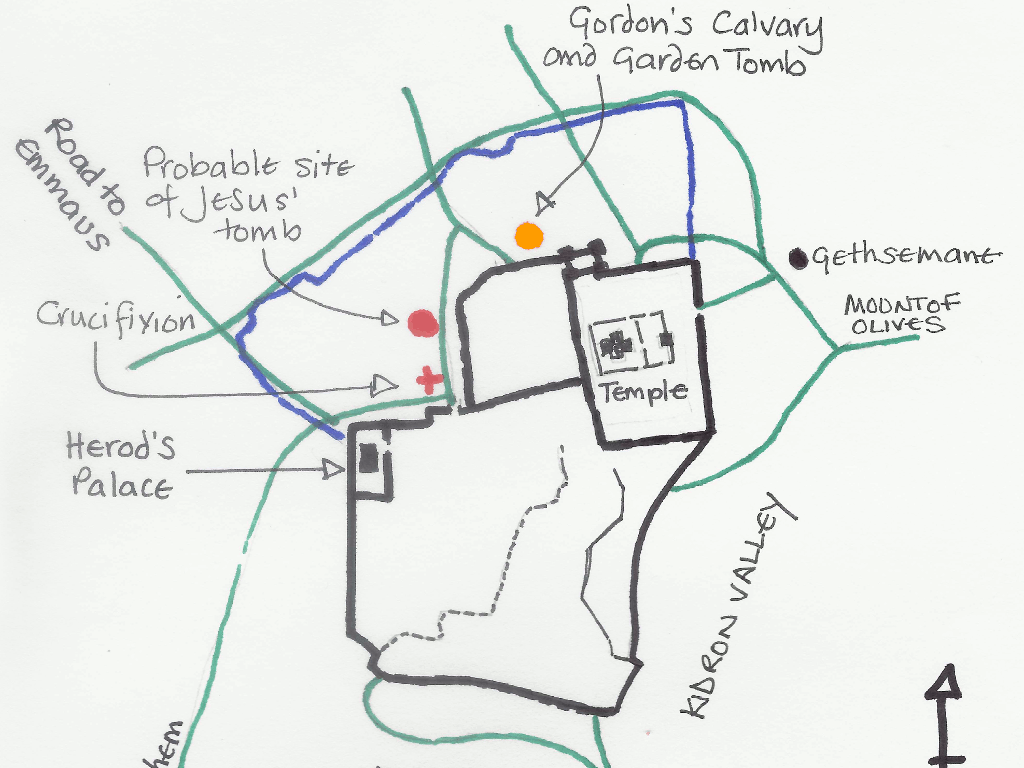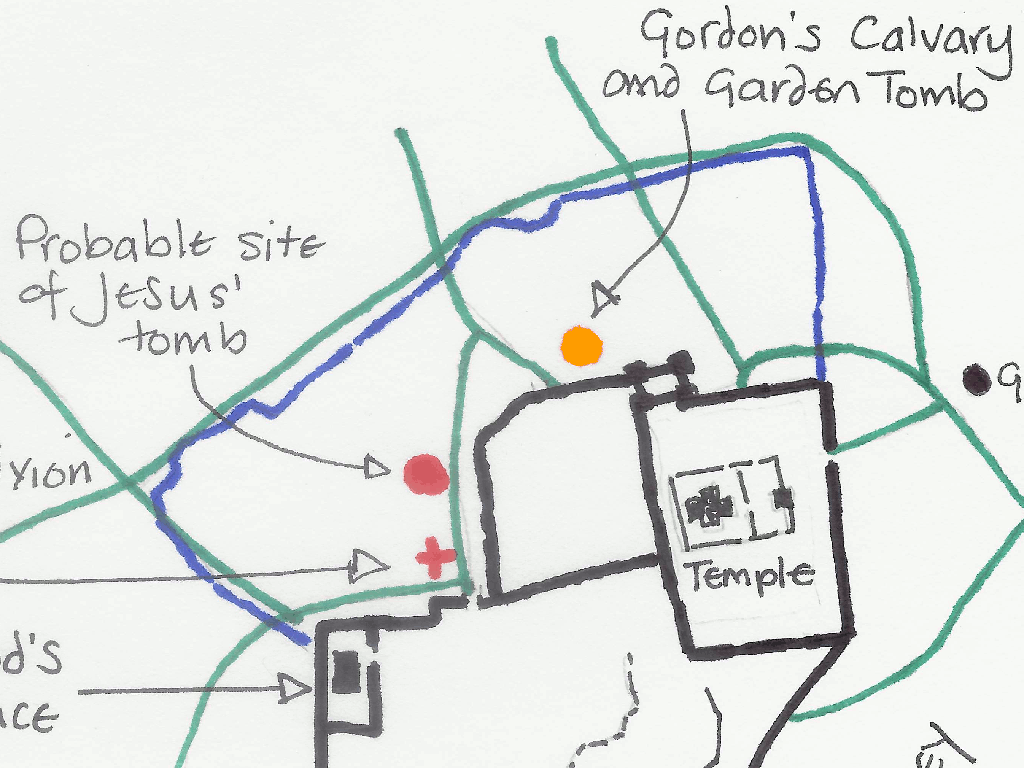Jesus' Burial, with some Insights from Archeology
Speaker:
Andrew & Anne Fountain
Date:
Sun, 2020-07-19 - We believe the Bible because it is God’s word, but nevertheless it is encouraging to our faith so see the strength of the evidence.
- Plus it helps us to visualize and conceptualize what actually happened at a real place and date.
- If you have trouble viewing this video, you can try watching it directly on Vimeo
- Play Audio
Sermon Outline - Jesus’ Burial, with some Insights from Archeology
Images used for teaching purposes bibleplaces.com —Pictorial Library of Bible Lands (Used by permission)
Please note that for copyright reasons, none of the images appear in the notes below.
1. Intro and read 2 passages
John 19:31–40
- Then, because it was the day of preparation,
so that the bodies should not stay on the crosses on the Sabbath (for that Sabbath was an especially important one), the Jewish leaders asked Pilate to have the victims’ legs broken and the bodies taken down. - So the soldiers came and broke the legs of the two men who had been crucified with Jesus, first the one and then the other. 33But when they came to Jesus and saw that he was already dead, they did not break his legs. 34But one of the soldiers pierced his side with a spear, and blood and water flowed out immediately. 35And the person who saw it has testified (and his testimony is true, and he knows that he is telling the truth), so that you also may believe.
- For these things happened so that the scripture would be fulfilled, “Not a bone of his will be broken.” 37And again another scripture says, “They will look on the one whom they have pierced.”
- After this, Joseph of Arimathea, a disciple of Jesus (but secretly, because he feared the Jewish leaders), asked Pilate if he could remove the body of Jesus. Pilate gave him permission, so he went and took the body away. 39Nicodemus, the man who had previously come to Jesus at night, accompanied Joseph, carrying a mixture of myrrh and aloes weighing about seventy-five pounds. 40Then they took Jesus’ body and wrapped it, with the aromatic spices, in strips of linen cloth according to Jewish burial customs. 41Now at the place where Jesus was crucified there was a garden, and in the garden was a new tomb where no one had yet been buried.
- And so, because it was the Jewish day of preparation and the tomb was nearby, they placed Jesus’ body there.
Luke 23
- Now there was a man named Joseph, from the Jewish town of Arimathea. He was a member of the council, a good and righteous man,
- who had not consented to their decision and action; and he was looking for the kingdom of God.
- This man went to Pilate and asked for the body of Jesus.
- Then he took it down and wrapped it in a linen shroud and laid him in a tomb cut in the rock, where no one had ever yet been laid.
- It was the day of Preparation, and the Sabbath was beginning.
- The women who had come with him from Galilee followed and saw the tomb and how his body was laid.
NET Bible
2. Anne: Tombs and burial – archeology
3. The Jerusalem Factor
4. Anne: Where did this happen?
5. The earliest Gospel message
1 Corinthians 15:1–9
- Now I want to make clear for you, brothers and sisters, the gospel that I preached to you, that you received and on which you stand,
- and by which you are being saved, if you hold firmly to the message I preached to you — unless you believed in vain.
- For I passed on to you as of first importance what I also received:
That Christ died for our sins according to the Scriptures, - and that he was buried,
and that he was raised on the third day according to the Scriptures, - and that he appeared to Cephas, then to the twelve.
- Then he appeared to more than five hundred of the brothers and sisters at one time,
most of whom are still alive, though some have fallen asleep. - Then he appeared to James, then to all the apostles.
NET Bible
Updated on 2020-07-19 by Andrew & Anne Fountain
- Login to post comments



